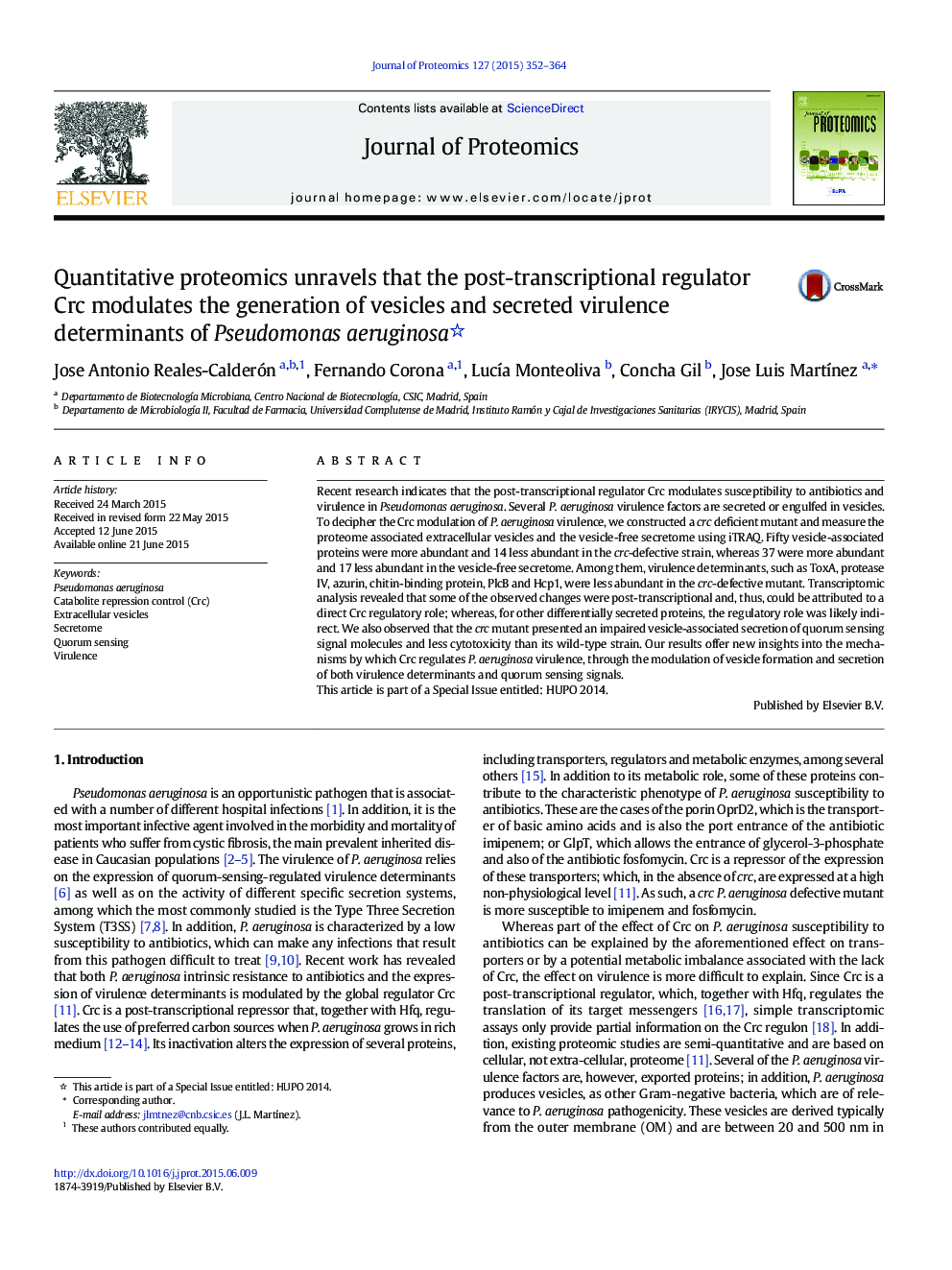| کد مقاله | کد نشریه | سال انتشار | مقاله انگلیسی | نسخه تمام متن |
|---|---|---|---|---|
| 1225449 | 968223 | 2015 | 13 صفحه PDF | دانلود رایگان |

• For the first time, the secretome of P. aeruginosa is analyzed using iTRAQ technology.
• We have determined the effect of Crc on P. aeruginosa secretome.
• Crc modulates virulence factors and vesicle-associated QS signals secretion.
• Crc modulates P. aeruginosa cytotoxicity.
• Crc modulates the host response by altering IL-8 production.
Recent research indicates that the post-transcriptional regulator Crc modulates susceptibility to antibiotics and virulence in Pseudomonas aeruginosa. Several P. aeruginosa virulence factors are secreted or engulfed in vesicles. To decipher the Crc modulation of P. aeruginosa virulence, we constructed a crc deficient mutant and measure the proteome associated extracellular vesicles and the vesicle-free secretome using iTRAQ. Fifty vesicle-associated proteins were more abundant and 14 less abundant in the crc-defective strain, whereas 37 were more abundant and 17 less abundant in the vesicle-free secretome. Among them, virulence determinants, such as ToxA, protease IV, azurin, chitin-binding protein, PlcB and Hcp1, were less abundant in the crc-defective mutant. Transcriptomic analysis revealed that some of the observed changes were post-transcriptional and, thus, could be attributed to a direct Crc regulatory role; whereas, for other differentially secreted proteins, the regulatory role was likely indirect. We also observed that the crc mutant presented an impaired vesicle-associated secretion of quorum sensing signal molecules and less cytotoxicity than its wild-type strain. Our results offer new insights into the mechanisms by which Crc regulates P. aeruginosa virulence, through the modulation of vesicle formation and secretion of both virulence determinants and quorum sensing signals.This article is part of a Special Issue entitled: HUPO 2014.
Figure optionsDownload high-quality image (159 K)Download as PowerPoint slide
Journal: Journal of Proteomics - Volume 127, Part B, 8 September 2015, Pages 352–364